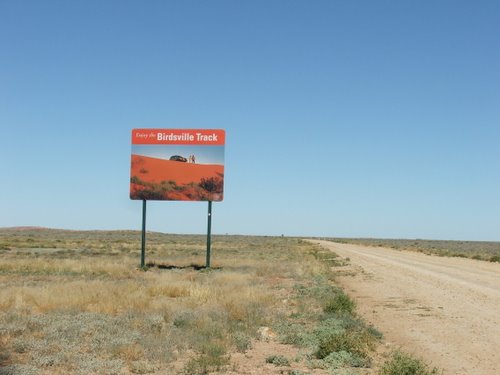10 Things You Need to Know about Outback Travel
Last Updated October 4, 2007Driving Tips
 Driving in the outback of Australia is a lot different from driving on the east coast or any of the main highways. The key difference is you may go days without seeing another vehicle and longer if its not tourist season or you aren’t on a main road .
Driving in the outback of Australia is a lot different from driving on the east coast or any of the main highways. The key difference is you may go days without seeing another vehicle and longer if its not tourist season or you aren’t on a main road .
There are some universal rules which have developed which will keep you a whole lot safer:
- If you break down do not leave the vehicle. There are numerous cases when someone decided to walk for help and by the time the vehicle was found their body was as well. A vehicle will provide shelter from the sun and is lot easier to see than a person. It has things you can burn (like tyres) if someone flies overhead.
- If you see someone stopped, slow down and make sure that they are OK. Always stop and check that they have the right gear to fix the problem and/or don’t need extra hands. remember the roadside assistance is not going to come to you out here!
- Don’t drive at night, don’t even drive an hour or so before sunset. Wildlife causes most one vehicle accidents in the bush, we’ve seen dead kangaroos, emus, cattle and even a buffalo – these animals will make a big mess of a vehicle and invariably are more active at night and very hard to see
- The maximum safe speed for most vehicles on a dirt road is 80km/hr regardless of what the posted speed limit is. 4WD take longer to stop, because they are heavier, and are easier to tip over, particularly if they a roof rack on.
- If the road is stony – slow down more – we drove parts of the Kimberleys at 50km/hr and never had a flat tyre – we met others who had had 2 flats in 1 hour! If you are getting flat tyres either your tyres aren’t in good condition or you are driving too fast.
- Don’t drive when tired – just because you can drive 2 or 3 hours without a break on seal doesn’t mean you can do the same thing on dirt – it requires a lot more concentration, and implications of getting wrong a whole lot worse.
- Carry a few hundred in cash, not all outback fuel stops take cards or the lines may be down .
- Carry more water than you need, the vehicle may need some too. We carried 50l for 2 people with a radiator which required about 750ml every 1,000 or so.
- Never carry petrol within a vehicle even in a jerry can – its too flammable. Diesel is however OK to carry inside – another reason to go with a diesel vehicle.
- Some roads require permits from the traditional landowners do your research and apply in advance if necessary.
Posted in Driving Tips